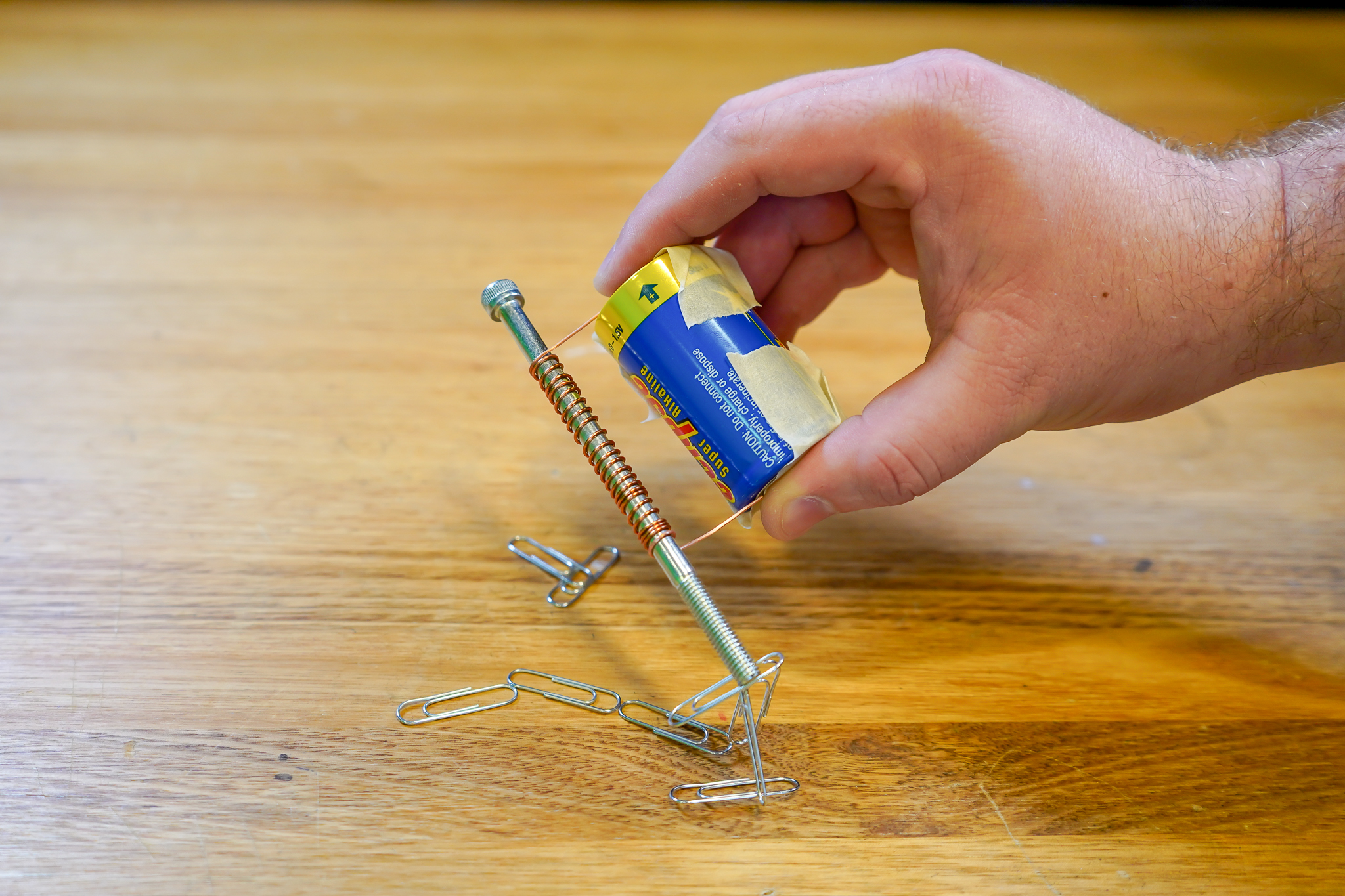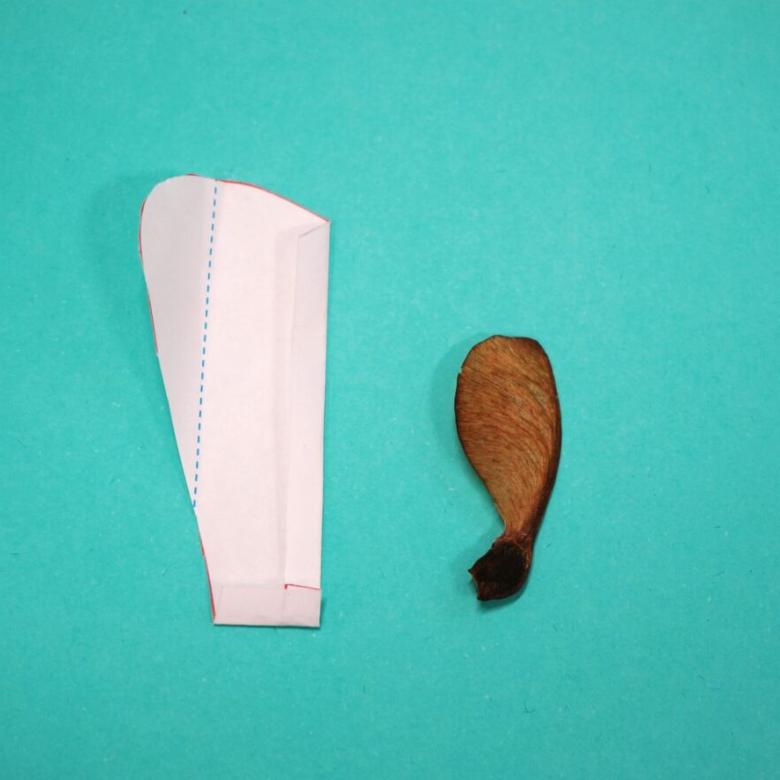You'll need
- Thin enamelled copper wire (around 30 cm)
- A steel nail
- Sandpaper
- A battery (D-sized works best)
- Some paper clips
- Sticky tape
- Pliers

What to do
- Use the sandpaper to remove the enamel coating from each end of the copper wire. This will help the electricity flow from the battery to the wire.

- Wind the copper wire tightly around the nail, leaving about 5 cm of wire free at each end. Wrap the wire around the nail as many times as you can – the more, the better!

- Sticky tape opposite ends of the wire to the positive and negative terminals of the battery. Don’t hold the wire to the battery with your fingers as it can get very hot!
- Hold the electromagnet near the paper clips to see if you can pick them up.

- Congratulations, you’ve just made an electromagnet!
Questions to ask
How many paper clips can you pick up?
What else can you wrap with copper wire to make an electromagnet? A stick? A pen? A fork?
What else can you pick up with this electromagnet? A coin? A bottle cap? A pebble? Why do you think you can pick up some objects, but not others?
What's happening
When electricity flows through the wire in this experiment, it creates a magnetic field. The iron in the steel nail is ferromagnetic – when it is near another magnet, it becomes magnetic too!
The electricity in the wire is actually a whole bunch of tiny particles called ‘electrons’ all moving together. When they move, these electrons create magnetic fields. Because there are lots of them moving together, the electron’s individual magnetic fields combine and get stronger. This creates a magnetic field that is wider than the wire is! When you wrap it around the steel nail, this field turns the nail into one big magnet.
You might notice that the paperclips also become magnetic when you pick them up. You can make a ‘chain’ of them as each one picks up the next with its own magnetic field. The strength of the magnetic field around each paperclip is lower than the one before, so the longer your chain gets the harder it is to pick up the next paperclip!
Did you know
Extremely powerful electromagnets can push – or repel – water molecules with their strong magnetic fields! Most living things are mainly made of water, which means that a strong enough magnet can make them float in mid-air. Scientists used this to make a frog float with a strong electromagnet. Theoretically a strong enough electromagnet could make a human float!






